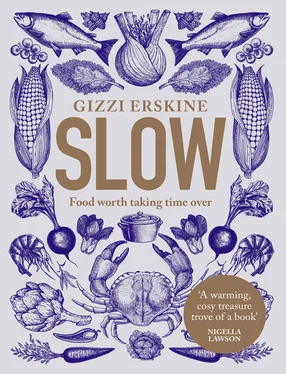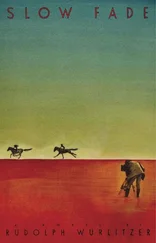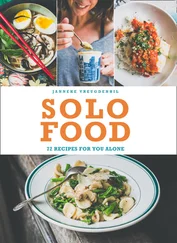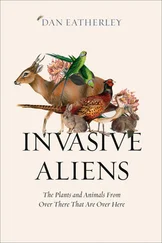Now don’t get me wrong, simplicity is something I value enormously. One of my favourite things to eat is a simple tomato salad. It can be really good, if maybe a little bit ugly, when made using tomatoes that are just a bit overripe and that have been slow-grown in soil. The journey of these tomatoes is wholly different from that of mass-produced Dutch ‘double end’ tomatoes, grown in nutritionless blue fluff in rows and rows of glasshouses in Holland. You know the type of tomato I mean? They’re grown for yield, as money-makers; pumped full of growth promoters and poisoned with insecticides. These are the tomatoes that big corporate food producers palm off on the consumer, who often doesn’t really understand the difference between various tomatoes, as the packaging is designed to allow each type to masquerade as a premium product. I mean the sexy little ‘Italian’ numbers that are rarely from Italy or Spain or anywhere Mediterranean as the packaging suggests, but mainly from Holland.
Now if you’re the dream tomato – and I have this on great authority from one of the best greengrocers in the biz, Andreas Georghiou from Andreas on Chelsea Green – you live in the south of Italy on the Amalfi coast of Naples. The tomatoes are irrigated naturally as the ‘magic mist’ of the salty sea water is spritzed up into the air above the nutrient-dense charcoal and peaty soil of the volcanic hills. Here the tomatoes grow at a slow and steady pace, and the salt-water irrigation naturally fights off bugs while infusing the tomatoes and bringing out more flavour. You’re the dream tomato; you smell of the sea, you smell as a real tomato should smell! These kings of the tomato world are called San Marzarno tomatoes. You wouldn’t dream of eating them in any other way than raw and just a fraction beyond firm with salt and a trickle of the decadent first pressing of olive oil – and if you have it, a dash of high-quality reduced sherry vinegar, such as Capirete or El Majuelo.
What I’m saying is that this is the food and method of production that I value, and while I appreciate that it is not always available to everyone, it acts as a metaphor for the ideal approach to recipes. You can enhance the simplest ingredient with the same amount of care and attention and this will yield the same kind of experience as eating that magical tomato.
I also see this approach as one you can apply to all areas of modern consumption; if you value the ingredients you buy more highly, you are more likely to cook properly with them, less likely to create waste, less likely to consume more than you need. We cannot continue to live at our current relentless, reckless pace with no consideration for the impact it is having on the world around us, let alone our personal health. We need to start being more conscientious and considered. With this in mind, my book is focussed towards vegetables, meat and dairy products that have been produced with the same investment of time, energy and care.
We all need to reduce our consumption of meat, but I want this book to challenge the way in which you buy it, in order to ensure that the meat you do buy is of the highest possible quality. I also want to encourage you to try more unusual and economical cuts, to make use of the whole animal and respect and value the idea of eating meat. This to me is the most modern way of eating; realistic but aware! I’ve started to focus away from organic produce, instead seeking out slow-grown, ethically and properly produced food. By looking into the background of the ingredients we buy we can educate ourselves about where our food is coming from, and I guarantee that the best-quality food will be the tastiest, and will have the added bonus of offering the highest nutritional value.
Home is where the heart is. I don’t know many chefs who value the food cooked in their restaurants more highly than home cooking. The modern dialogue we really need about home cooking should focus on learning how to slow things down. I know we live in a world where we work too much and have less and less time, but cooking purely for speed frustrates me – especially when I think back to my mother’s stew. This was a weeknight supper and not always reserved for the weekends. So how do we find the time to cook like that these days?
I’m not living in some kind of fantasy land where I believe we all have time to spend hours cooking every day. But I guarantee that a well-spent Saturday afternoon in the kitchen, investing in the perfect stew or ragu, or even just an evening a week when you park the troubles of the day and create nourishing soulful food, is attainable. So I hope to inspire you to get stuck in, enjoy the techniques and evaluate the food you eat in order to positively influence your health, your soul and the world.
Writing a cookbook and dividing the recipes into chapters is always hard. It often becomes complicated, as some recipes can serve a purpose in many chapters. In essence the techniques I offer here are quite simple. They cover methods of poaching, braising and stewing, as well as steaming, baking and salt baking, roasting and understanding heat, and also making the doughs and pastries we often allow the supermarkets to make for us. You will find notes that help to link recipes together and a whole chapter of useful basic recipes. I want this book not only to inspire and broaden your repertoire, but also to help you really get to grips with expanding your cookery skill set and make you a more confident and conscientious cook.


Curry Soy Miso Ramen with Roast Butternut Squash, Tofu & Kimchi
Vegan ramens tend to lack body and viscosity, and I wanted to make one which had the same depth of flavour as a tonkotsu – the king of ramens. I use an old Japanese technique of making a miso and soy milk broth and it’s good (I eat it a lot) but then I add a curry base to the broth and there is no meat eater out there who would argue that this soup base doesn’t have everything that you would ever want. The toppings are the extras that I like: the roasted butternut squash goes so well with the curry, the tofu adds protein and the kimchi acidic spice. I’ve also popped some shiitake mushrooms in there too and finished with sesame and Korean chilli pepper. Leave the eggs out to make this an entirely vegan dish.
SERVES 2 (MAKES ENOUGH SOUP FOR 4)
Preparation time 30 minutes
Cooking time 1 hour
2 tbsp coconut, light rapeseed or groundnut oil, plus extra for frying
1 onion, finely chopped
6 garlic cloves, roughly chopped
3cm piece of ginger, peeled and roughly chopped
2 tbsp curry powder (English or Malaysian)
1 tsp ground coriander
½ tsp turmeric
1 tbsp soy bean chilli oil (Chinese, Thai or Japanese)
1.2 litres boiling water
200g white miso paste
3 tbsp mirin
1 tbsp nutritional yeast
1 tsp Marmite
2 tbsp dark soy sauce
1 tbsp palm or brown sugar
400ml soy milk
200g shiitake mushrooms, sliced
200g firm tofu, cut into thick slices
100ml teriyaki sauce
2 free-range eggs, boiled for 6 minutes, quickly cooled in iced water and peeled
90g buckwheat noodles per person, cooked until al dente and refreshed in iced water
3 slices roasted butternut squash per person ( see here)
2 heaped spoonfuls kimchi
2 spring onions, thinly sliced
½ tsp Korean chilli powder
Читать дальше














